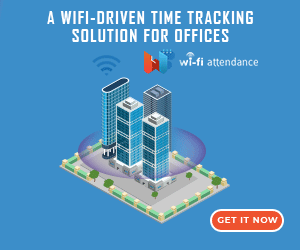
Creating a flexible work schedule for your company may not seem easy. But with a systematic approach, you can prepare a list of options beneficial for both you and the employees. When HR leaders know what they need to implement, their task becomes easy and they are in a position to manage employees better.
Flexible Work Schedules Already Exist
You may not have a formal flexible work environment in your organization but the truth is that it is already happening. Many employees have ‘terms’ with their managers. As part of these ‘terms’, they enjoy work from home, occasional day offs, early leaves etc.
Such under the table arrangements with managers create inequality as some employees have privileges while others don’t. This necessitates the need for a formalized flexible work arrangement program.
In an informal setup, the use of such arrangements cannot be monitored. While employees and managers may be reluctant on the implementation of a formalized flexible work schedule, it is important to create fair guidelines. Such a working environment suits both the employee and the employer resulting in better productivity and an increased morale.
Have Different Flexible Work Options
A successful flexible work arrangement (FWA) requires the right combination of flexible work options. Flexible work schedules can be divided into different categories:
1. Flexible Time:
This involves leeway with respect to the amount of time they need to work for. Employees need to complete eight hours but there is no restriction on what time they start and what time they end.
They could take few hours off to complete personal tasks such as attending their child’s school event or visiting the bank. They could also opt for different shift timings.
2. Flexible Time Off:
Here, employees can opt for extra vacation, long-term leaves or personal offs.
3. Flexible Location:
This gives employees the option of working from home without having a physical presence in the office.
How to create a flexible work schedule?
When HR leaders prepare a flexible work schedule, there are certain questions that they need to ask themselves:
1. What is the purpose of FWA?
Think of the problem you are intending to solve with the implementation of FWA. For instance, the option of flexible location reduces real estate costs since you don’t need space to fit employees. Similarly, flexible time gives employees space to complete their personal tasks and feel that the organization they work with is considerate.
2. What is it that your employees need?
A well-drafted FWA program can boost employee engagement and productivity. This is why it is important to select flexible work options as per the requirements of the employees. Sit and discuss with employees what they are looking for.
3. Are your managers comfortable?
One of the most common reasons for the failure of FWA programs is excessive leniency. If there are too many flexible options, managers struggle to track when employees are working and when they are not. Your FWA options must be suitable for both the managers and employees.
4. Is your FWA a good fit?
This is extremely important. Different departments have different goals and it is important that your flexible work options suit the type of work performed at your organization. The ultimate objective of your FWA program is to improve productivity and that is exactly what it should lead to.
You may have to alter the compensation scheme and also incorporate different performance management techniques in your HR program for the successful implementation of the FWA. Take all these factors into consideration before you announce the FWA program in front of all employees.
A Customized Flexible Work Schedule
The FWA program you finally implement must be suitable for your organization. It must have appropriate guidelines and boundaries that provide comfort to the employees and managers. Perform a test run to be sure of the program you devise and understand if there is a need for any tweaking.
Use the flexible work schedule to your advantage. Promote it on all career-related portals and your website to attract prospective talent.









